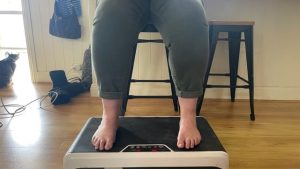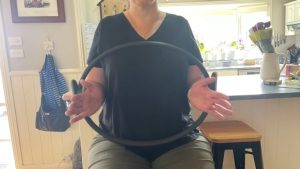Summary: This program adopts a staged loading approach. Initially, we aim to alleviate pain in the tendons and joints by reducing the load. Subsequently, we progressively increase the load, utilizing an extended isometric time-under-tension model.
Sets and Repetitions
2 sets of 5 repetitions each.
Each repetition consists of a 15-second interval. Employing a 3-10-2 rhythm: Three seconds for the concentric phase, ten seconds isometric hold, and two seconds for the eccentric phase.
Frequency: 3 to 5 sessions per week.
Duration: Approximately 90 minutes per week, translating to roughly 10 to 30 minutes per session. Based on how your joint/s are feeling
Progression: Over 12 weeks, your isometric hold time will increase to 45 seconds while the sets and repetitions remain consistent. Load increments only occur when you sense joint stability and improved pain management.
Speed of the Movement: We emphasize a slow, deliberate, and controlled pace during the initial 2-3 weeks. Avoid rapid movements to ensure safety and effectiveness.
Equipment: Vibration platform, 2 kg dumbbells, pilates ring, resistance bands: pink, green and blue
Wall Exercises for Muscle Strengthening, Joint Stability, and Minimal Joint Stress: Using the wall for isometric holds is paramount when stabilizing joints to strengthen muscles effectively. This approach enables isometric contractions to exert force without undue stress on your joints, increasing tendon load without increasing joint load.
Gauging the Strength of Isometric Contractions: Your confidence and control in movement dictate the force applied. We use a force scale of 0 to 10 to increase your maximal voluntary isometric contraction (MVIC), with 0 indicating no force and 10 signifying maximum effort. Aim for a rating of 1 or 2 over the first few weeks to increase your MVIC over the 12 weeks.



Pain Management/Tolerance: The isometric exercises are designed to minimize or eliminate pain during movement. Using a pain scale of 0 to 10, we target a range between 0 and 3. Any higher may indicate potential joint instability. Listening to your body and exercising within your comfort zone is important. Remember, you know your body better than anyone.
Body Position and Posture: Utilizing a wall for stability is essential while performing upper body exercises. This stabilizes the targeted joint and facilitates varying degrees of isometric loading without the risk of subluxation. This practice stabilizes the joints and prevents hypermobility by assisting the ligaments and tendons surrounding your joint from being pulled out of position.
Sets, Repetitions, and Rest Periods: Execute two sets of five repetitions. For wall-based exercises, adhere to the 3-10-2 pattern. Prioritize slow, controlled movements without any rapid or ballistic actions. Focus on smooth, deliberate motion, and maintain proper breathing. Take rest periods as needed, especially in the early stages; pacing is crucial.
Frequency and Consistency: Consistency is key to gradual strength development. Implement the program 3 times a week, bearing in mind your daily comfort levels and physical condition. This regularity will enable your body to adapt and grow stronger over time.
Controlled Neuromuscular Activation: Improved neuromuscular control is pivotal in managing joint hypermobility and reducing the risk of accidental joint subluxations. Isometric exercises foster controlled neuromuscular activation, enhancing proprioception (joint position awareness) and muscle control.
